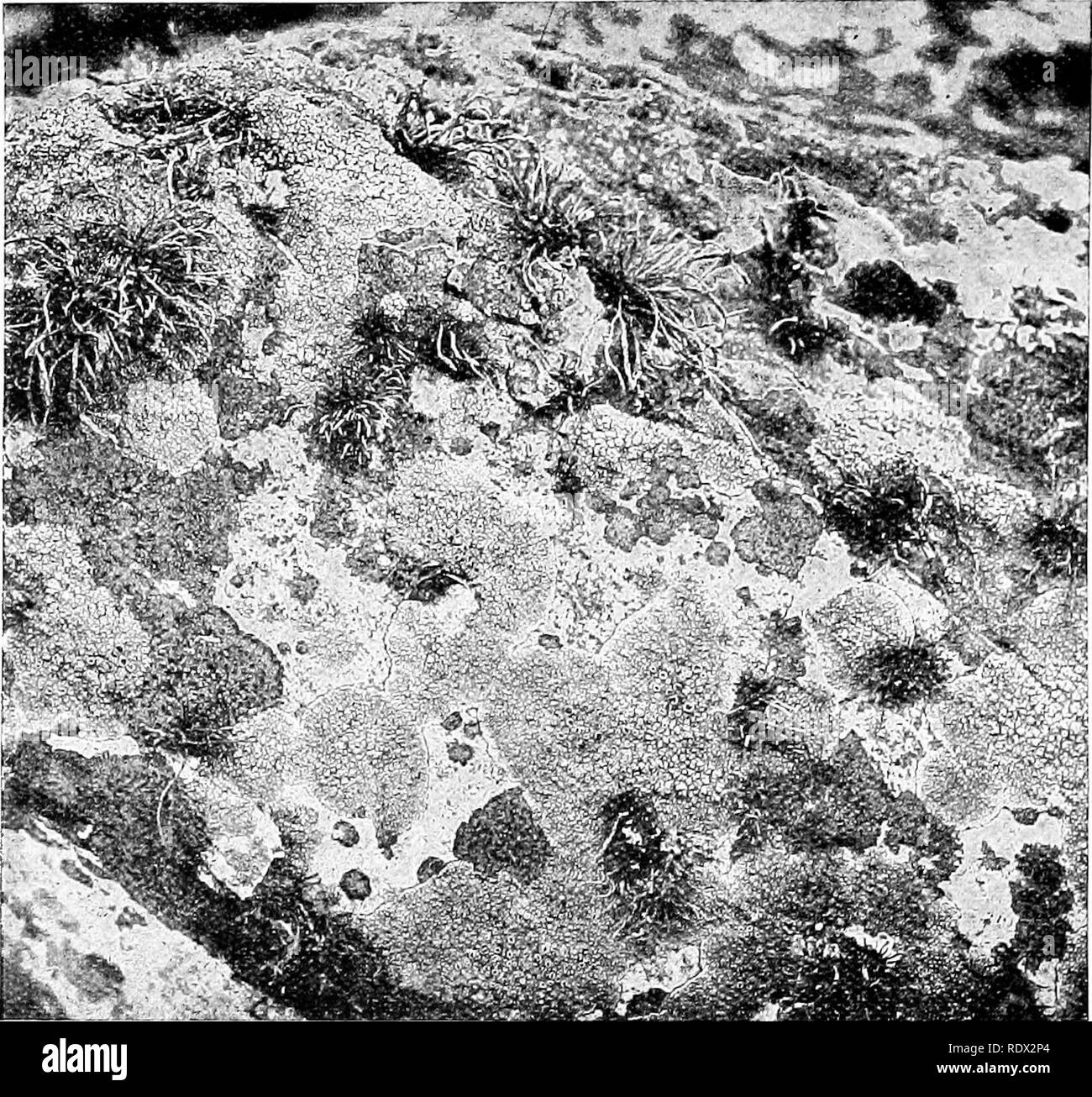. Lichens. Lichens. 382 ECOLOGY Parmelia prolixa is the most abundant of the Parmelias: it covers large spaces of the rocks and frequently competes for room with the Ramalinas, or in other areas with Physcia aquila and Lecanora parella. A number of crustaceous species which form the sub-vegetation of the Ramalina belt, and also on the same level, clothe the steeper rock faces where shelter and moisture are insufficient to support the foliose forms. "In general the sub-vegetation of the eastern and northern coasts is largely composed of species that are common in Alpine and upland regions.

Image details
Contributor:
The Book Worm / Alamy Stock PhotoImage ID:
RDX2P4File size:
7.1 MB (756.7 KB Compressed download)Releases:
Model - no | Property - noDo I need a release?Dimensions:
1634 x 1529 px | 27.7 x 25.9 cm | 10.9 x 10.2 inches | 150dpiMore information:
This image is a public domain image, which means either that copyright has expired in the image or the copyright holder has waived their copyright. Alamy charges you a fee for access to the high resolution copy of the image.
This image could have imperfections as it’s either historical or reportage.
. Lichens. Lichens. 382 ECOLOGY Parmelia prolixa is the most abundant of the Parmelias: it covers large spaces of the rocks and frequently competes for room with the Ramalinas, or in other areas with Physcia aquila and Lecanora parella. A number of crustaceous species which form the sub-vegetation of the Ramalina belt, and also on the same level, clothe the steeper rock faces where shelter and moisture are insufficient to support the foliose forms. "In general the sub-vegetation of the eastern and northern coasts is largely composed of species that are common in Alpine and upland regions. This. Fig. 125. Crustaceous communities in the Ramalina belt. Lecanora atra Ach. (grey patches) and Buellia ryssolea A. L. Sm. (dark patches). (After M. C. Knowles, R. Welch, Photo.) is due to the steepness of the rocks and also to the colder and drier conditions prevailing on these coasts." An association of Rhizocarpon geographicum, Lecanora {sordida) glaucoma and Pertusaria concreta f. Westringii forms an almost continuous covering in some places, descending nearly to sea-level. On sunnier and moister rocks with a south and south-west aspect the association is of more lowland forms such as Buellia colludens, B. stellulata Lecanora smaragdula and L. sivtplex f strepsodina. (2) The Orange belt. "Below the Ramalinas, and between them and the sea, several deep yellow or orange-coloured lichens form a belt of varying. Please note that these images are extracted from scanned page images that may have been digitally enhanced for readability - coloration and appearance of these illustrations may not perfectly resemble the original work.. Smith, Annie Lorrain. Cambridge, At the University Press